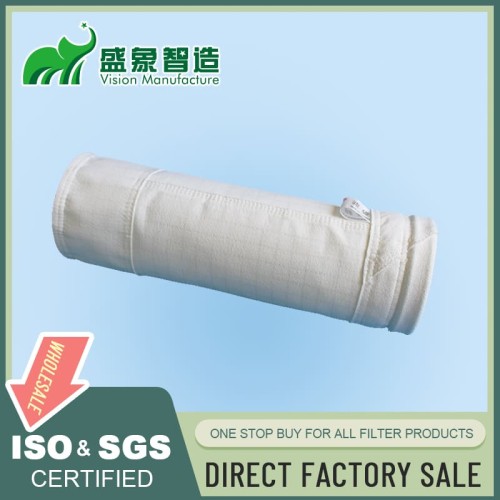
Cement Filter Bags Enhance Dust Collection in Cement Production
I. Introduction
Effective dust control is crucial in cement manufacturing, not only to meet environmental standards but also to ensure product quality and workplace safety. This section introduces cement filter bags as essential components in managing dust emissions effectively.
II. Types of Cement Filter Bags
Cement plants utilize various types of filter bags to accommodate different dust collection systems:
- Pulse Jet Filter Bags: Designed for systems that clean filters using rapid, high-pressure air bursts.
- Reverse Air Filter Bags: Used in systems where air flows in reverse to clean the filters.
- Shaker Filter Bags: Employ mechanical shaking mechanisms to dislodge dust.
- Pleated Filter Elements: Offer increased surface area for dust collection within a compact design.
III. Material Composition
The effectiveness of cement filter bags largely depends on their material composition:
- High-Temperature Resistant Fibers: Such as Nomex, which can withstand the high temperatures often encountered in cement processing.
- Chemical-Resistant Materials: Ensure durability in harsh chemical environments.
- Abrasion-Resistant Fabrics: Crucial in handling the physically abrasive nature of cement dust.
- Specialty Blends for Cement Applications: Optimized for specific challenges in cement dust collection.
IV. Design Features
The design of cement filter bags is tailored to enhance their performance and durability:
- Bag Dimensions and Shapes: Configured to maximize dust collection efficiency and fit various collector designs.
- Seam Construction Techniques: Strong seams are critical to withstand the pressures of dust collection.
- Surface Treatments and Finishes: Such as coatings that improve dust release and extend bag life.
- Attachment Methods: Including snap bands and cuffs that ensure secure and leak-free connections.
V. Operational Principles
Understanding the operational principles behind dust collection is key to optimizing filter performance:
- Dust Capture Mechanisms: How dust is entrained within the airflow and captured by the filters.
- Cake Formation and Release: The build-up and subsequent release of dust cake enhance filtration efficiency.
- Cleaning Cycles and Methods: Regular intervals at which cleaning mechanisms activate to maintain filter efficiency.
- Pressure Drop Management: Ensuring minimal resistance to airflow to maintain energy efficiency.
VI. Performance Factors
Several performance metrics are crucial for evaluating cement filter bags:
- Filtration Efficiency: The effectiveness of the bags in capturing dust particles.
- Airflow Characteristics: The ability to maintain adequate airflow through the filter.
- Temperature Resistance: Capacity to operate under high temperatures typical in cement manufacturing.
- Chemical Compatibility: Suitability of filter materials for the chemical environment.
- Abrasion Resistance: Ability to resist wear from abrasive cement dust.
VII. Installation Considerations
Proper installation is crucial for the effectiveness of cement filter bags:
- Proper Handling and Storage: Ensures that bags are not damaged before installation.
- Installation Techniques: Critical for ensuring optimal fit and function within the dust collector.
- Initial Break-in Procedures: Necessary steps to condition the bags for use.
- System Integration: Ensuring that the filter bags are compatible with the overall dust collection system.
VIII. Maintenance and Monitoring
Regular maintenance ensures the longevity and efficiency of cement filter bags:
- Regular Inspection Routines: Scheduled checks to identify any potential issues.
- Cleaning and Regeneration Methods: Techniques to maintain filter efficiency.
- Replacement Indicators: Knowing when to replace bags to maintain system efficiency.
- Troubleshooting Common Issues: Addressing typical problems to minimize downtime.
IX. Regulatory Compliance
Cement filter bags help facilities meet stringent regulatory requirements:
- Emission Standards for Cement Plants: Adherence to federal and state environmental guidelines.
- Workplace Safety Regulations: Ensuring worker safety in handling and operations.
- Environmental Protection Guidelines: Compliance with local regulations regarding air quality.
- Industry-specific Certifications: Meeting standards specific to the cement industry.
X. Cost Analysis
Evaluating the cost-effectiveness of cement filter bags involves:
- Initial Investment Analysis: Upfront costs of system installation.
- Operational Costs: Ongoing expenses related to energy use and maintenance.
- Maintenance and Replacement Expenses: Costs associated with regular upkeep and part replacement.
- ROI and Payback Period: Assessing the financial return on investment over time.
XI. Environmental Benefits
Cement filter bags contribute significantly to environmental sustainability:
- Reduced Particulate Emissions: Lowering pollutants released into the atmosphere.
- Improved Air Quality: Enhancing the air quality both within and outside of cement plants.
- Energy Efficiency Contributions: Reducing energy consumption through efficient dust collection.
- Material Recovery and Recycling Potential: Facilitating the recovery of materials from collected dust.
XII. Case Studies
Illustrative examples from various cement plants demonstrate the benefits of implementing advanced dust collector systems, highlighting improvements in air quality, efficiency in material handling, and compliance with environmental standards.
XIII. Technological Advancements
The future of dust collection in cement silos looks promising with:
- Development of Advanced Filter Media: Enhancements that improve durability and filtration efficiency.
- Smart Monitoring and Control Systems: Incorporation of sensors and monitoring systems for better management.
- Energy-efficient Cleaning Mechanisms: Innovations that reduce maintenance demands.
- Integration with Plant-wide Automation: Streamlining operations across facilities.
XIV. Conclusion
Cement filter bags are indispensable in the cement industry, significantly improving air quality and material conservation. With ongoing advancements in technology and a strong emphasis on environmental compliance, these systems are set to become even more integral to industrial operations. Embracing these innovations is crucial for any facility looking to enhance its operational efficiency and environmental footprint.
Leave a comment

